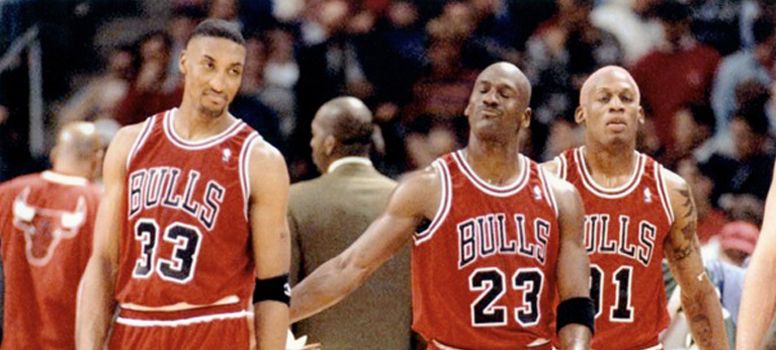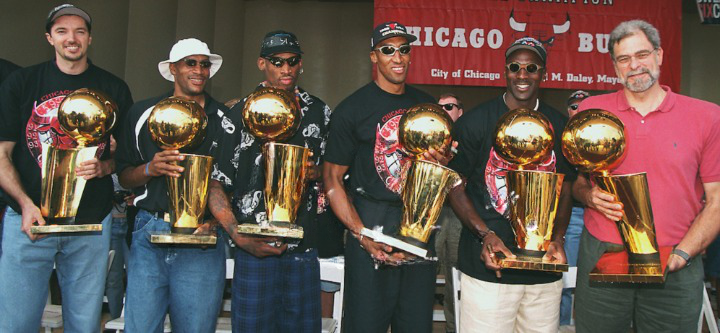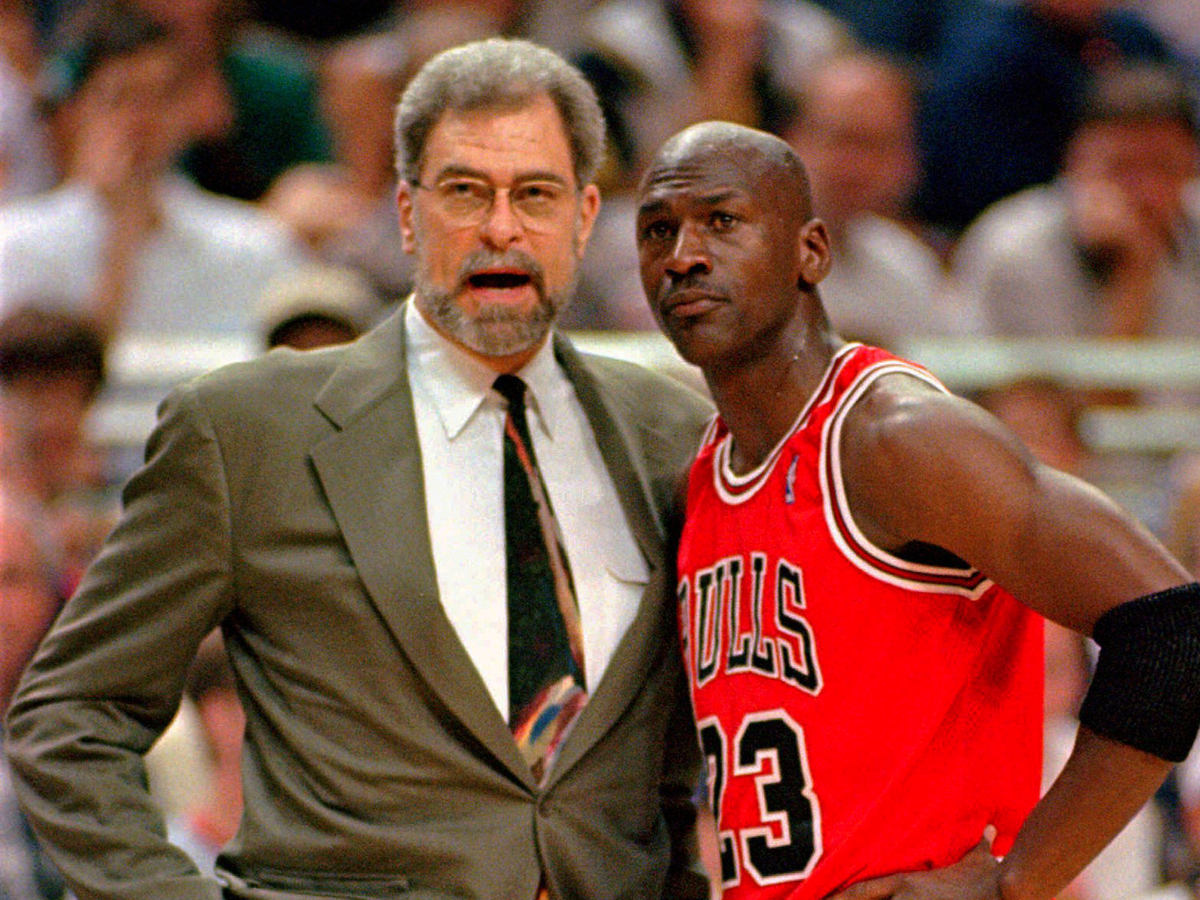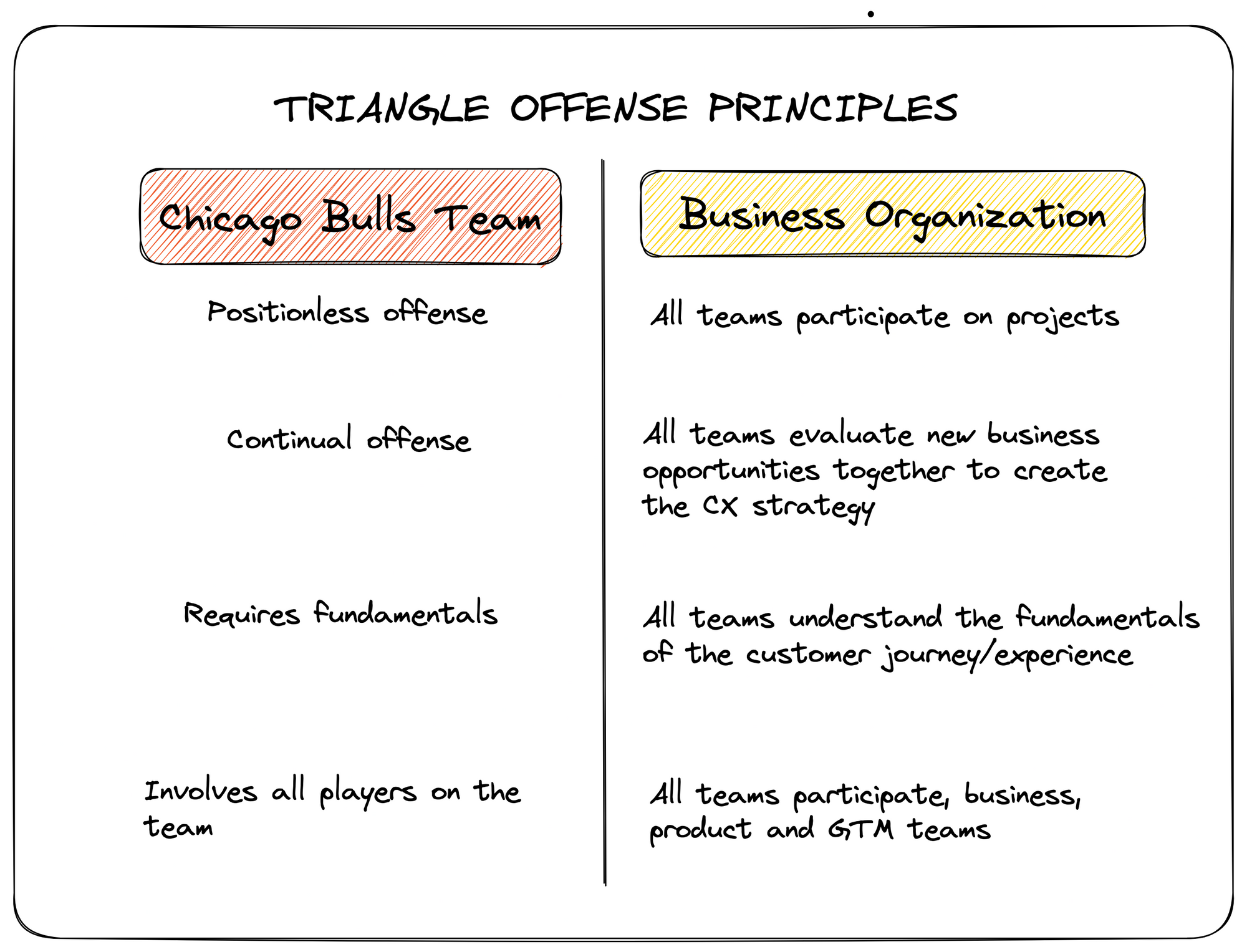The Triangle Offense CX Framework: Borrowing Successful Strategies from NBA Champions
The Triangle Offense CX Framework, rooted in the Chicago Bulls' strategy, cultivates customer loyalty through shared responsibility for customer experience, continuous opportunity evaluation, and team-wide understanding of customer segments.

With this framework, you can create a CX strategy no matter how complex the customer experience or how challenging the organizational design. This framework delivers results every single time.
And guess what? I borrowed this framework from a group of insanely successful, rich athletes. Who? Well, from arguably one of the winningest NBA teams ever: the Chicago Bulls.

These guys crushed it in the 90s. How did they do it? What was their secret? Let's find out by looking at the Chicago Bulls organization and its Triangle Offense system that helped them win six championships in the 1990s.
Winning in Business With the Triangle Offense CX Framework: A Chicago Bulls Legacy

Let's rewind the clock and go back to 1989, when Phil Jackson became the Chicago Bulls’ head coach and asked his offensive coach, Tex Winter, to run his triangle offense system for the team. This strategy allowed Phil Jackson to focus on the big picture and work on his relationships with his team’s players.
At that time, the Chicago Bulls had superstars Michael Jordan and Scotty Pippen on their team. Dennis Rodman joined the team in 1995. If you’re unfamiliar with the Chicago Bulls and their journey to winning the NBA championship title six times in the 1990s, I encourage you to watch the Netflix documentary The Last Dance.
The Basketball Triangle Offense System
Phil Jackson knew they needed to win championships or his superstars might leave the team. If that happened, they would also lose ticket and merchandise revenue by upsetting their loyal fans. This would have been a terrible outcome for the Chicago Bulls organization.
So what did Phil Jackson do? He probably made the most intelligent decision of his entire coaching career. He asked Tex Winter to run his Triangle Offense system. But there was a wrinkle—Phil knew he needed his superstars’ buy-in. He talked with Michael Jordan and asked him to trust the system.
Jordan was concerned that the Triangle Offense system would keep the ball out of his hands at crucial times in the game. You see, one of the key Triangle Offense system’s principles is that it is position-less. The whole team shares the ball, generating equal opportunity for all players to put points on the board. However, Michael Jordan wasn’t easily swayed. He was concerned that the other players on the team might not be able to perform when it was most needed.
Phil Jackson assured Michael Jordan that when it came to the critical moments in the game, he (Jordan) would be given the ball and allowed to win those games. Michael Jordan was a superstar and wanted that responsibility because he had a winner’s mentality. Winners win!
What happened next was pure magic. In 1991, the Chicago Bulls won their first of six NBA championships. Why did this Triangle Offense system work so effectively and propel the Chicago Bulls to fame and riches?
The Triangle Offense System: Timeless Principles Powering Organizations to Win
From a business perspective, the Triangle Offense system marries systems thinking with CX team members’ strengths. It’s a nearly unbeatable combination that will help you put points on the board regardless of your CX team.

The Triangle Offense framework principles for CX teams:
- Position-less Offense: CX is every team’s responsibility; it automatically asks all teams to contribute and identify opportunities to improve the customer experience.
- Continual Offense: All teams aggressively evaluate new business opportunities generated from the Executive Audience Experience Map, Customer Journey Map, and the opportunity artifacts.
- Improve Fundamentals: All teams fundamentally understand the customer segments to which they sell products and services. They know the gaps and what areas of responsibility they want to improve. Strategic CX objectives become a reality when everyone can execute at the same level, and the customers will love you.
- Involves the Entire Team: All teams participate; no single group owns the customer experience. (The exception is when a CX leader is placed in charge of customer segments and has owners reporting to them.)
These principles form the framework's foundation and should always guide you as you start thinking about how to adopt the framework for your organization or team.
Summary
At a glance, the principles from the Triangle Offense system seem like simple common sense—maybe even rudimentary. However, when you combine the principles with key CX documentation, the correct workshops, and a meeting cadence that powers the creation of CX strategy and execution, your team will experience improved performance, increased confidence, better collaboration, and teamwork. Most importantly, your team will understand how they can become the customer's champion.
This framework requires a specific mindset that is hyper-focused and driven to succeed. Winners always set themselves apart from others because they study all aspects of their game. Success doesn’t happen by chance—it's built brick by brick over time and ultimately compounds into a win of massive magnitude.
I encourage you to read these books today and learn from the best so you can win tomorrow.
- Eleven Rings: The Soul of Success (Paperback)
- Coach Tex Winter: Triangle Basketball (Paperback)
- Michael Jordan: The Life (Paperback)
- The Mamba Mentality: How I Play
Written by Leo Vroegindewey, B2B CX Consultant
Get in touch to improve your customer experience and increase sales. Let's talk about how I can help your business grow. Email me.